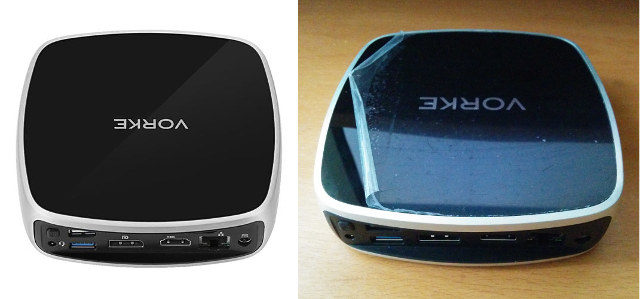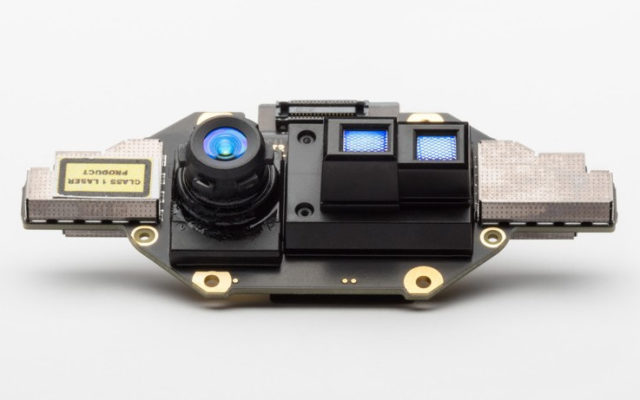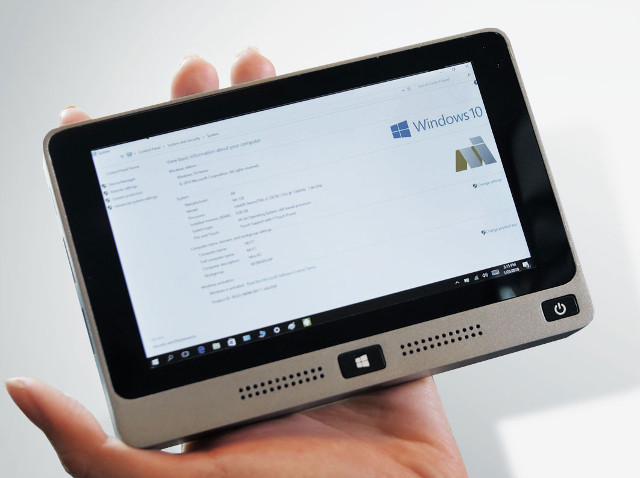The Vorke V5 Plus mini PC just goes to show how initial impressions can be very misleading. Arriving in a plain manila-coloured box with the protection film on the top of the device starting to peal-off the minimalist contents only included a round-pin (European?) power supply and a small B&W ‘user’ manual. The mini PC has an Intel Celeron Processor 3865U from the Kaby Lake mobile range which is a dual-core (dual-thread) non-turbo 1.8GHz processor. However this SoC also includes an Intel HD Graphics 610 processor capable of 4K support at 60Hz through DisplayPort, although only 4K@24Hz on HDMI (1.4). Additionally the SoC supports DDR4 RAM in dual-channel configuration. The V5 Plus model which comes with both memory and storage although it is sold without them as a barebones V5 model. Physically the V5 looks similar to a NUC and the pre-populated V5 Plus included a single SODIMM stick of […]
Microsoft Introduces Project Kinect for Azure
Kinect started as as motion sensing input device for Xbox 360 & One game consoles with an integrated webcam, infrared projector, and a microphone array, which enabled it to detect depth, motion, and voice from gamers. But it also become popular with maker projects due to price and capabilities, and was even found to be a worthy microphone array for voice commands. The third generation of Kinect went into Hololense mixed reality headset, and Microsoft has just unveiled the fourth generation Kinect with Project Kinect for Azure. AFAIK, the company did not provide the full technical details about the new Kinect, but we know it comes with an RGB camera, a 360-degree mic array, an accelerometer, and a time-of-flight (ToF) depth-sensor, and the company did offer some details about the latter : Number of pixels: 1024×1024 resolution Highest Figure of Merit (highest modulation frequency and modulation contrast resulting in low […]
Google ADT-2 is an Android TV Dongle for Developers
You may remember we covered a “4K ATV Stick” last month, as a mostly unknown manufacturer (Shenzhen SEI Robotics) applied for FCC certification, with the device featuring a large G marking, leading some to speculate it may be an upcoming Google device. At the time, I dismissed it, and believed if was just another Chinese “Android TV” or “Android” TV device, but Google has now released a similar looking Android device which probably means I was wrong… It’s not a consumer device however, and after Google ADT-1 Android TV developer kit launched in 2014, Google has now unveiled ADT-2 developer device that runs Android P developer preview with Google Assistant. ADT-2 OTT HDMI stick specifications: SoC- Amlogic S905X quad core Cortex A53 processor with Arm Mali-450MP GPU System Memory – 2GB RAM Storage – 8GB eMMC flash Video & Audio Output – HDMI 2.0a with HDCP 2.2 support Video Decoding […]
Google Assistant Adds 6 New Voices, Supports Smart Displays, Will Expand to 80 Countries
We’ve already seen announcements about Android P and Android Things 1.0 for Google I/O 2018, but the company also took the opportunity to provide an update to the new features coming to Google Assistant. Some of the improvements are specifically related to the audio features (voice assistant): Google Assistant is now naturally conversational so it can understand more complex requests such as asking the weather using expressions like “Will it be cats and dogs today?”. 6 new voices are now available, and John Legend’s voice is coming later this year. More voices should be supported in the future, thanks to improvements in AI and WaveNet technology from DeepMind that eliminates the needs for recording hundreds of hours of audio in a recording studio, and enabled adding new voices in just a few weeks. Continued Conversation – as its name implies – will allow Assitant and you to have a “natural […]
Android P Beta Released. What’s New?
Last March, Google released Android P developer preview with new features such as indoor positioning with WiFi RTT, support for display notch, HDR VP9, HEIF image compression, a new API to access two or more camera simultaneously and so on. Google I/O 2018 has just gotten started, and the company announced the release of Android P beta with yet more features, and support for phones from more manufacturers. Some of the most notable features include: Adaptive Battery uses machine learning to prioritize access to system resources for a user’s most commonly run apps, and places each app in four “buckets” ranked from “active” to “rare”. Apps will change buckets over time, and apps not in the “active” bucket will have restrictions for jobs, alarms, network and high-priority Firebase Cloud Messages. App Actions will also use machine learning to show actions for specific apps depending on context. For example highlighting “Taylor Swift” […]
Mi Mini PC is a $150 Pocket-Sized Windows 10 Mobile PC with a 5″ Touchscreen Display (Crowdfunding)
Around 2 years ago, I reviewed GOLE1 mini PC running Windows 10 and Android 5.1, powered by an Intel Atom x5-Z8300 Cherry Trail processor with 4GB RAM and 64GB SSD. It also came with a 5″ 1280×720 display and a battery, so you could use it on the go. I discovered several issues related to WiFi, USB 3.0, Windows 10 on a 5″ display, among others, but still found it was an interesting concept. Mi Mini PC – unrelated to Xiaomi Mi products – looks very similar to GOLE1, but comes with better specifications including an Atom x7 processor, 8GB RAM, and a 128GB SSD. Mi Mini PC specifications: SoC – Intel Atom x7-Z8750 quad core Cherry Trail processor @ 1.60 / 2.56 GHz with 16EU Intel HD Graphics; 2W SDP System Memory – 8 GB RAM Storage – 128 GB SSD (upgradeable to 256 or 512 GB) + micro […]
A 6-Part BeagleBone Webinar for Users, Developers and Education Starts on May 10
The BeagleBone Black and derivatives like PocketBeagle or BeagleBone Green Wireless are still popular development boards, and if you are interested in the platform as a developer, user, or educator, you may learn more about the boards and how to use them in an upcoming BeagleBone webinar series presented by Jason Kridner, the co-founder and board member at BeagleBoard.org Foundation, and element14. The webinar series will start in about 2 weeks with the following schedule: Introduction to BeagleBone – 10th May 2018 @ 11:00 AM (CDT)/17:00 (GMT) BeagleBone for Linux Users – 24th May 2018 @ 11:00 AM (CDT)/17:00 (GMT) BeagleBone for Embedded Developers – 6th June 2018 @ 11:00 AM (CDT)/17:00 (GMT) BeagleBone for Web Developers – 21th June 2018 @ 11:00 AM (CDT)/17:00 (GMT) BeagleBone Blue for Robotics – 12th July 2018 @ 11:00 AM (CDT)/17:00 (GMT) BeagleBone in the Classroom – 26th July 2018 @ 11:00 AM […]
Armbian History, Infrastructure, and Progress Report
Many of us rely on Armbian Debian and Ubuntu images for our cheap Arm development boards since they usually offer better support than vendor supplied firmware images. The community has just updated Armbian website, but the thing that caught my eye in the announcement was a link to a 45-minute presentation by Igor Pečovnik, working full-time on the project, that details the history about Armbian, and provides a relatively recent progress update as it was made at BalCCon – Balkan Computer Congress in November 2017. I’ve embedded the video further below, but first I’ll provide summary of the key point made during the presentation. It all started with Cubieboard (A20) as Igor was trying to fix some issues, and learn how to improve software support on the board. Several people joined his efforts on Cubieboard forums, and eventually Armbian website launched in mid 2014 running on the Cubieboard then ODROID-XU4 […]













